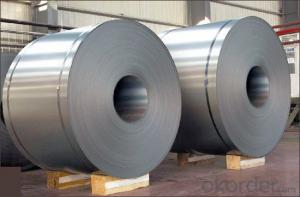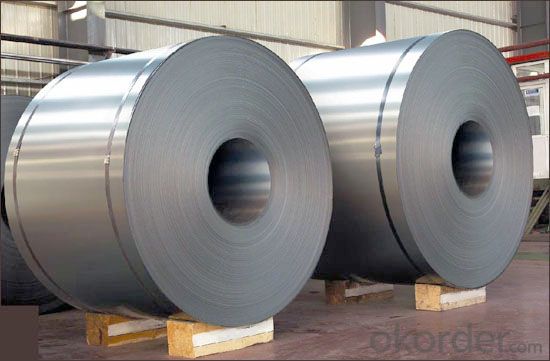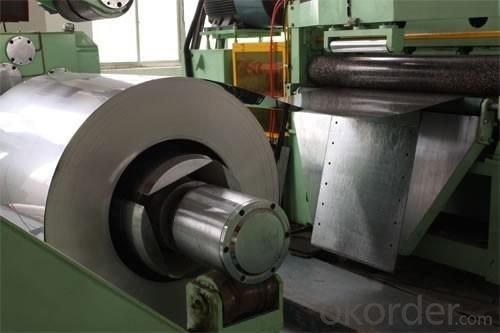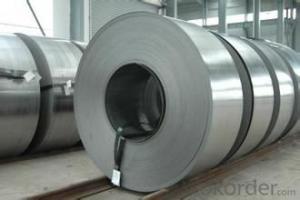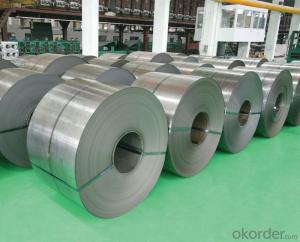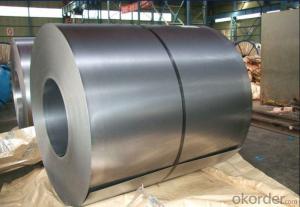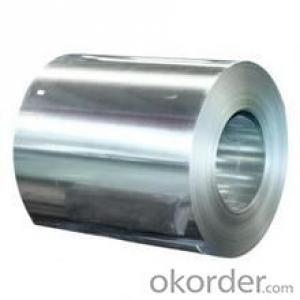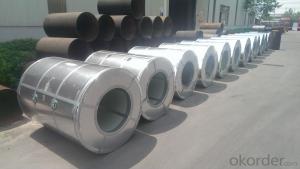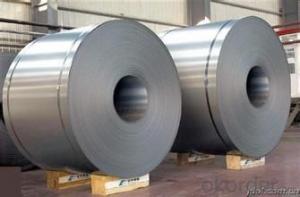Cold Rolled Steel coil --in Good Quality China Best
- Loading Port:
- China main port
- Payment Terms:
- TT OR LC
- Min Order Qty:
- 50 m.t.
- Supply Capability:
- 10000 m.t./month
OKorder Service Pledge
OKorder Financial Service
You Might Also Like
Cold Rolled Steel coil --in Good Quality China Best
1.Structure of Cold Rolled Steel Description:
The raw material of cold rolled steel coil/sheet is high quality hot rolled product, and after pickling continuous rolling, degreasing, annealing,skin pass,slitting and cut to length line etc. Along with it many kinds of new technology and new process of global cold rolling production have been applied. Therefore the quality of the goods could be guaranteed. 2.Main Features of the Cold Rolled Steel:
• Excellent process capability
• Smooth and flat surface
• Workability, durability
• High strength
• Good visual effect
3. Cold Rolled Steel Images
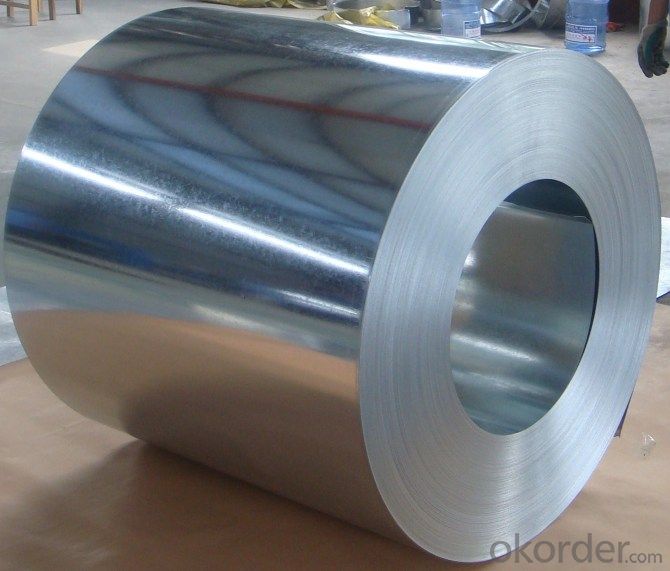
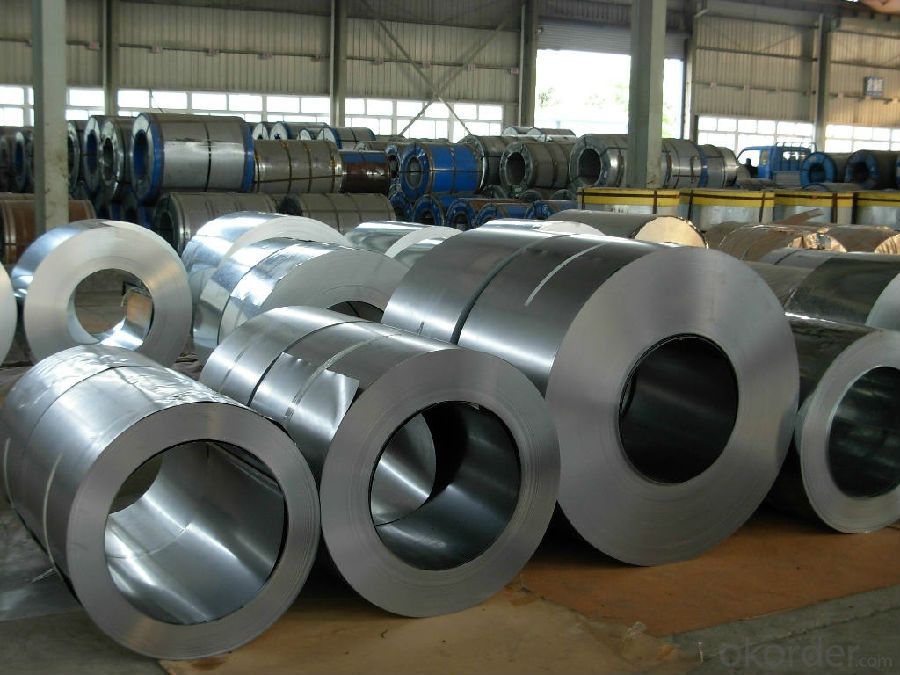
4.Cold Rolled Steel Specification
Standard:AISI,ASTM,DIN,GB,JIS,JIS G3302 ASTM 653M EN10142
Grade: Q195~Q345
Thickness: 0.16mm~2.0mm
Width: 1250mm MAX
Coil weight:3-12 MT
Chemical composition:
C | Si | Mn | Cr | Ni | P | S |
0.150 | 0.476 | 11.231 | 12.50 | 0.900 | 0.039 | 0.010
|
5. FAQ of Cold Rolled Steel
1.How to guarantee the quality of the products?
We have established the international advanced quality management system,We resolutely put an end to unqualified products flowing into the market. At the same time, we will provide necessary follow-up service assurance.
2. How long can we receive the product after purchase?
Usually within thirty working days after receiving buyer’s advance payment or LC. We will arrange the factory manufacturing as soon as possible. The cargo readiness usually takes 15-25 days, but the shipment will depend on the vessel situation.
- Q: How do steel coils compare to other materials in terms of cost?
- Steel coils are generally more cost-effective compared to other materials. Steel is a widely available and abundant material, which makes it relatively inexpensive to produce. Additionally, steel coils have a longer lifespan and require minimal maintenance, reducing overall costs in the long run. The durability and strength of steel also make it an ideal choice for various applications, further enhancing its cost-effectiveness. When compared to materials like aluminum or copper, steel coils tend to be more affordable, making them a preferred choice for many industries.
- Q: What are the main factors that affect the price of steel coils?
- The main factors that affect the price of steel coils are the cost of raw materials, supply and demand dynamics, production and transportation costs, changes in government policies and regulations, and global economic conditions.
- Q: Are steel buildings more durable than concrete building?
- Yes of course they look nice and I think they are more durable and weather resistant than conventional concrete buildings. So if you are thinking of constructing a building then opt for steel buildings buddy :)
- Q: What are the common international standards for steel coils?
- The common international standards for steel coils include ASTM A36/A36M, ASTM A572/A572M, ASTM A283/A283M, ASTM A516/A516M, and EN 10025-2. These standards specify the requirements for the chemical composition, mechanical properties, and dimensions of steel coils used in various industries worldwide.
- Q: What are the advantages of using hot-rolled steel coils?
- Hot-rolled steel coils offer several advantages, including improved strength, durability, and formability. The high temperature during the rolling process allows for better shaping and molding, making it suitable for various applications. Additionally, hot-rolled steel coils have a smoother surface finish and are more cost-effective compared to cold-rolled steel coils.
- Q: Has anyone painted their appliences with stainless steel paint? I found on the internet what is called Thomas Liquid stainless steel paint. If you have used it for your kitchen appliences or cabinets, how were the results? How hard was it to apply? Would you recommend it?
- I have never heard of stainless steel paint, but I know that stainless steel is hard to clean and maintain
- Q: Steel is a mixture of Iron Carbon . So , is steel a metal or non - metal ?
- Steel is an alloy mostly made of metallic elements. You really wouldn't classify steel as a metal or a nonmetal. That terminology is mostly used with pure elements.
- Q: Can steel coils be cut to length?
- Yes, steel coils can be cut to length.
- Q: Why are steel saucepans and tea kettles covered with copper on the outside and the bottom? what r the goals of having high-quality pans that are thick and tea kettles that are thin walled?
- Stainless steel is less conductive than copper. However, steel will retain heat longer and thus be distributed more evenly. (hence the thick bottoms, but also for balance). Copper on tea kettles is ideal to bring water up to a boil rapidly but since your not really cooking food, temperature distribution or control doesn't really matter. Now if your cooking sensitive food, then it does matter. For example, the use of a double boiler is preferred for chocolates. Temperature and distribution is critical. As far as relatively inexpensive copper clad pots and pans such as Revereware? Well, I don't see a difference but perhaps they did some testing.
- Q: Are Steel buildings Fire Resistant, just want to know as I am going to owe it . Suggestions required…………..
- What burns in a building are mostly the furnishings and interior, not the frame it's made of. Steel buildings are more expensive to insure against fire than wood frame buildings, because in a fire more steel is damaged by warping and distortion than would happen in a wood-framed structure, and wood structures are easier (and cheaper) to repair. Of course, if everything in a building was non-flammable, fire would never occur. That doesn't usually happen, though, and it's all the flammable stuff that most buildings house inside that burns.
Send your message to us
Cold Rolled Steel coil --in Good Quality China Best
- Loading Port:
- China main port
- Payment Terms:
- TT OR LC
- Min Order Qty:
- 50 m.t.
- Supply Capability:
- 10000 m.t./month
OKorder Service Pledge
OKorder Financial Service
Similar products
Hot products
Hot Searches
Related keywords
